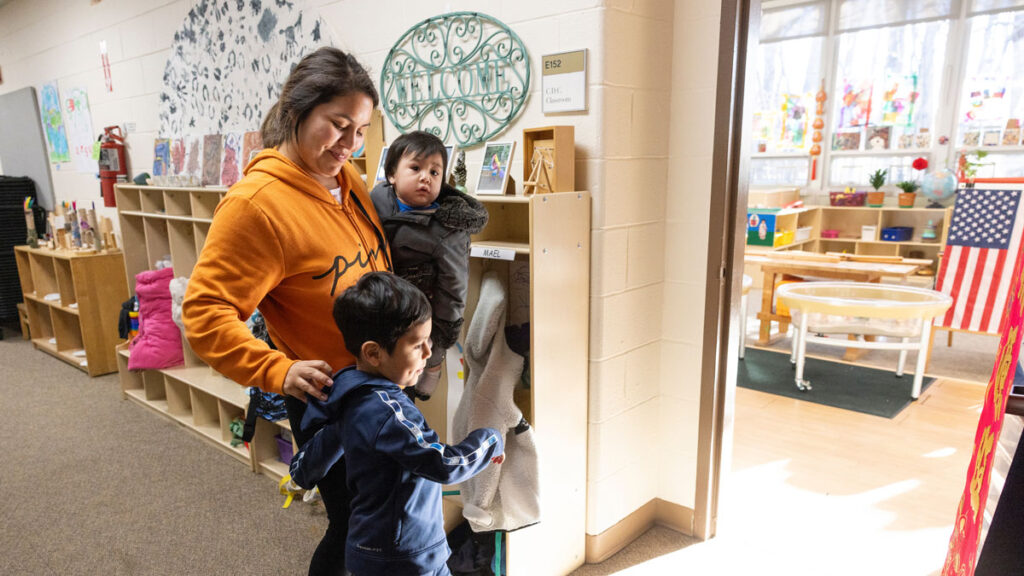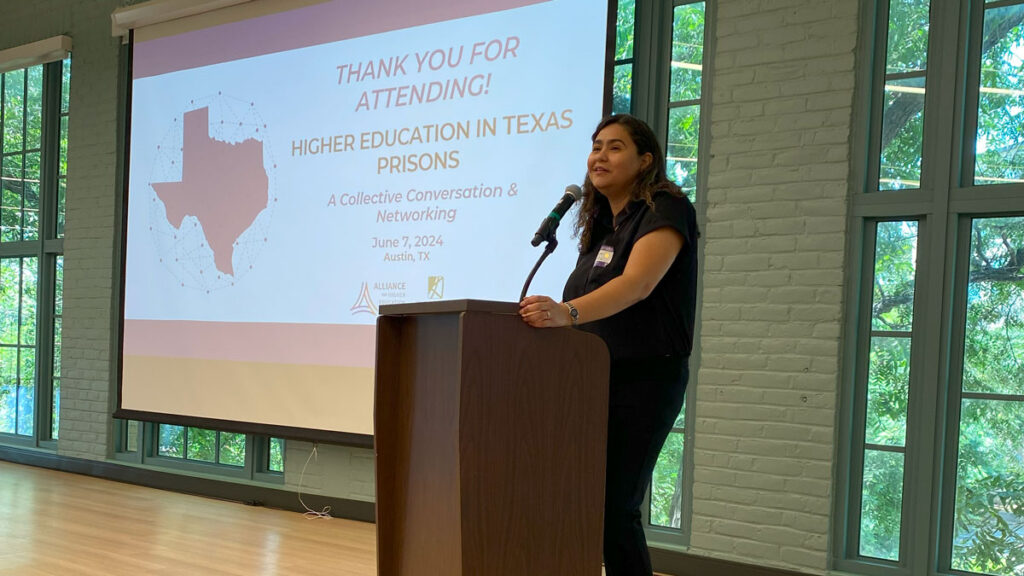Last year, the EdTrust’s third cohort of Justice Fellows reached out to 19 colleges to understand why more institutions hadn’t completed the process to become federally approved Prison Education Program (PEP) providers. At the time, there was widespread optimism that once Pell Grant eligibility was fully reinstated for incarcerated learners in 2023, institutions would flood U.S. prisons and begin enrolling thousands of students from one of the country’s most untapped populations.
Instead, we found hesitation. Of the 19 colleges contacted, 16 agreed to participate in a 90-minute interview, and all of them said that “administrative burdens” are a recurring issue. Institutions from coast to coast cited a lack of coordination between accreditors, colleges, and state departments of corrections. In one especially telling moment, Georgia University announced that it was sunsetting its PEP program, highlighting just how fragile the progress remains. That’s particularly true now the Trump administration has gutted nearly half of the staff at the U.S. Department of Education (ED), which oversees student borrowing and is the operational backbone behind everything from FAFSA processing to program accountability. Since then, processing delays, reduced oversight, and diminished customer service have become routine. And the administration isn’t done with the department yet. It’s working to dismantle it, which would place the fragile infrastructure supporting prison higher education in serious jeopardy.
Not Just Bureaucracy – Real Impact
The Trump administration’s actions are not without consequence. Without the ED, access to higher education within the prison system, long obstructed by its own brand of systemic barriers, could collapse, leaving incarcerated students — arguably the most vulnerable learners in the country — with much to lose.
For decades, the ED has played a critical role in helping incarcerated students navigate a higher education system that’s not designed for them. It helped reduce key barriers, like the following:
- Student Loan Defaults: Many incarcerated individuals had prior student loans in default, disqualifying them from aid. ED provided pathways for income-based repayment or loan consolidation to help them regain eligibility.
- FAFSA Accessibility: Completing a paper FAFSA form from prison is often slow and complicated, even after FAFSA simplification. ED offered guidance for incarcerated students and borrowers on dealing with corrections, signature issues, and processing delays — a crucial support in systems plagued by unreliable mail services.
- Program Authorization: ED developed and enforced standards for Prison Education Programs (PEPs), ensuring that incarcerated students received a quality education and that public funds were used responsibly.
- Equity Across State Lines: Federal oversight created uniform standards, ensuring that incarcerated students had equal access to programs, regardless of geography.
- Institutional Coordination: ED acted as a central hub, facilitating communication between corrections departments, colleges, and accrediting bodies to ensure program consistency and integrity.
The Fallout: A System Without a Center
If ED is dismantled, who will manage these processes? It’s unclear. Education department staff who oversee these processes were among those laid off. The FAFSA still exists — but who will ensure accessibility for incarcerated students? Pell Grants will still be funded, but a recent Republican-led proposal to limit Pell Grant eligibility would disproportionately harm incarcerated students by raising the full-time enrollment threshold from 12 to 15 credits and eliminating aid for those enrolled less than half-time. These changes ignore the logistical realities of prison education and could keep thousands from accessing Pell altogether. Additional proposed changes that prioritize short-term training over comprehensive education could further restrict access to higher education in prison.
If ED is abolished and these changes become law, states will be left to navigate the ensuing uncertainty alone. Some may suspend their PEPs because they’re unsure how to comply with federal requirements that no longer have clear administrators. Others may push forward without federal oversight, risking uneven implementation and inequitable access. In states where sentence reductions — also known as “diminution credits” — are tied to educational achievement, the lack of federal guidance is especially problematic. Without consistent standards, eligibility for these programs may vary wildly from one facility or one state to another.
This administration’s effort to dismantle ED also threatens the stability and accessibility of programs like Public Service Loan Forgiveness (PSLF) — which incentivizes individuals to enter public service in return for loan forgiveness after 10 years of qualifying payments — and income-driven repayment plans, which impact millions of Americans. President Trump’s plan to move federal student loan management to the Small Business Administration — which is losing 40% of its workforce and is ill-equipped to oversee the federal student aid system and the federal student loan portfolio — will undoubtedly disrupt borrower protections, including loan forgiveness mechanisms, and hurt service for borrowers.
The Human Cost of Disruption
Despite these changes, the need for education in prison hasn’t changed. And the data is clear: Higher education in prison reduces recidivism, improves employment outcomes, strengthens families, and saves taxpayer dollars. It’s a smart investment — and a moral imperative.
But this isn’t just about policy, it’s about people. For many incarcerated students, college is their first real opportunity to build a future. Higher education provides structure, confidence, and credentials that directly impact reentry success for individuals like Aaron Kinzel, who relied on federal student aid programs to rebuild his life after incarceration.
Kinzel is a 2025 EdTrust Justice Fellow, who upon release from prison struggled to find gainful employment. Through perseverance and by acquiring essential job skills, he eventually found his career. Kinzel has been a lecturer at the University of Michigan-Dearborn for nearly 10 years and holds multiple degrees. He is all but dissertation (ABD) and expects to complete his doctorate by this summer.
Yet despite or, perhaps, on account of his academic success, Kinzel has accrued over $476,000 in student loan debt over the last 18 years. He is enrolled in the PSLF program, established in 2007 with bipartisan support and signed into law by President George W. Bush. But Kinzel is now being forced into forbearance. His recent work history doesn’t count toward PSLF eligibility, due to complications arising from enrolling in the SAVE repayment plan, which offered affordable monthly payments for him and others but is now “as good as dead,” because of legal challenges from conservatives, who are politically motivated to remove any payment plan that benefits borrowers.
Individuals like Kinzel have honored their commitment to public service, but the proposed changes to the program, which restrict payment plans and deny loan forgiveness to workers at nonprofits that the administration deems politically undesirable, are a breach of governmental promises. They also threaten to undermine the significant rehabilitation and reintegration progress made by justice-impacted individuals. And weakening these programs will only push these individuals further toward society’s margins.
We’ve seen what’s possible: Incarcerated individuals like Kinzel who earn degrees and reintegrate can go on to become nonprofit leaders, policy advocates, or the first in their family to graduate from college. That’s the power of prison education. But losing access to that opportunity isn’t just an individual setback; it disrupts families and weakens entire communities. That’s what’s at stake.
What Can States and Advocates Do?
In the short term, states and advocacy organizations must demand clarity. If the federal student aid portfolio is moved out of the department, who will oversee it? And who will ensure that justice-impacted students don’t become casualties in President Trump’s war on education?
States must also take independent action. That means building accountability systems, adopting best practices, and forming coalitions that include and elevate justice-impacted voices in policymaking. States can’t wait for federal leadership; they must lead themselves.
While the Trump administration may walk away from its responsibilities, educators, students, advocates, and policymakers aligned by a shared vision of transformation through learning cannot. Now more than ever, we must protect students’ right to learn — even if they’re behind bars. The stakes are too high. The future of thousands of students hangs in balance.
Higher education in prison still makes sense. Let’s fight together to protect it.







